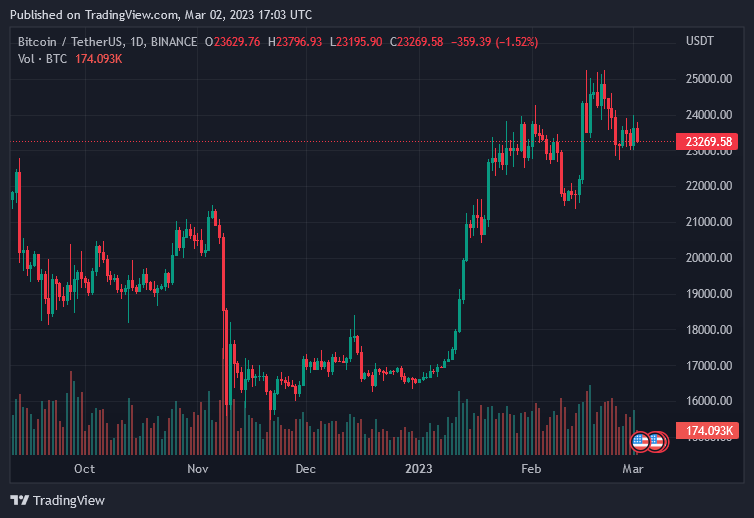
Alex Gladstein, the Chief Strategy Officer at the Human Rights Foundation, predicts that there will be more pressure for Bitcoin to change its consensus algorithm from proof of work to proof of stake.
Bitcoin Is A Work Of Art?
In a tweet on March 2, while replying to an MIT Technology Review post, the executive praised Satoshi Nakamoto, the founder of Bitcoin, for rolling out a network with great incentives that link the existing monetary system and network security to serve end user self-interest.
The article Gladstein responds to notes the significant energy savings that Ethereum has made since switching to a proof of stake system.
In this arrangement, Ethereum dumped the need for rigs for nodes where validators must stake coins for a chance to confirm transactions and receive network rewards.
Although Ethereum is now considered “greener,” some argue that the smart contracts platform can be vulnerable to government control.
Gladstein chimed in on this discussion, saying that the Bitcoin network’s dependence on proof-of-work means the platform cannot be controlled in later stages. He seems to criticize blockchains, including Ethereum, which use proof of stake consensus systems.
Instead, Gladstein lauds Bitcoin’s incentivization system that diffuses power to the user and ensures continuous decentralization. This occurs, the executive seems to allude, regardless of the energy demands behind Bitcoin.
Security And Convenience Versus Energy Demand
Bitcoin is a transactional layer designed to move funds trustlessly without relying on a third party. Through a system of nodes distributed across continents, the network can process BTC transactions, enabling the transfer of value.

In this system, the absence of a middleman means users can transfer funds any time of the day, more conveniently and without paying high fees than traditional remittance platforms. Transactions are usually confirmed within minutes and settled in wallets under the users’ control.
However, while this architecture provides convenience and diffuses power to end users, node operators must run rigs that meet high energy requirements. These nodes run a proof of work software where special node operators, called miners, compete to validate and include blocks to the blockchain for a reward.
This incentivization architecture continues to push Bitcoin’s energy requirements higher; some environmentalists say this mechanism is unsustainable. Meanwhile, proponents of proof of work say linking the Bitcoin network with electricity, a utility, becomes more secure and reliable.
Follow JERITEX:
Website: https://jritex.io
Telegram: t.me/jeritex
Telegram: t.me/jeritexasia
Telegram: t.me/jeritexgroup
Twitter: twitter.com/jeritex
Facebook: facebook.com/Jeritex/
YouTube: youtube.com/c/Jeritex
Medium: jeritexexchange.medium.com/
Reddit: reddit.com/r/JeritEX/
CoinMarketCap: coinmarketcap.com/community/profile/JRIT





































